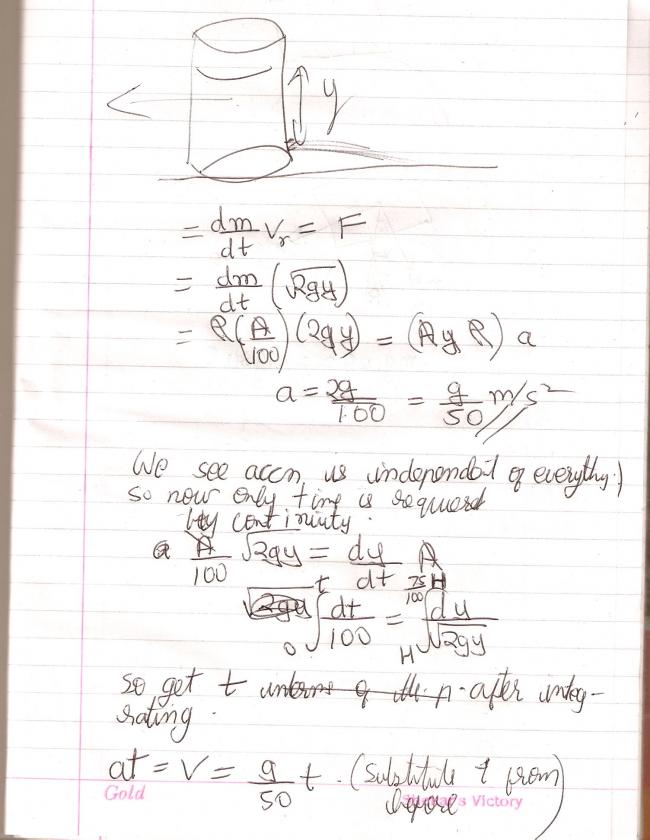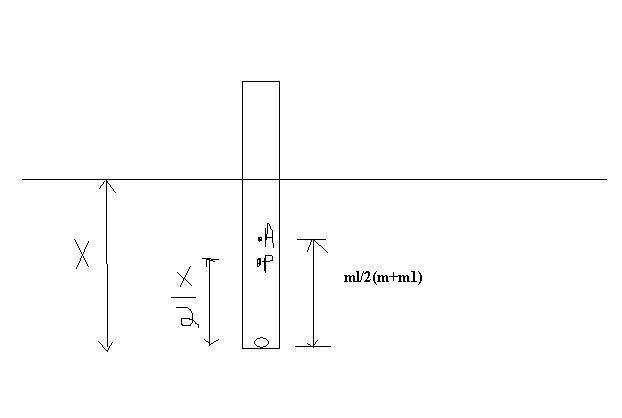
sorry for delayed response i didnt see ur question before[2][2][2]
Q1. A large open top container of negligible mass and uniform cross-sectional area A has a small hole of cross-sectional area A/100 in its side wall near the bottom. The container is kept on a smooth horizontal floor and contains a liquid of density Ï and mass m0. Assuming that the liquid starts flowing out horizontally through the hole at t=0, calculate:
(i) the acceleration of the container
(ii) the velocity when 75% of the liquid has drained out.
sorry yaar if m0 is given only and not h then u can rite AÏH = M0 .....
so ull get height in terms of given variables for the second Q (of Q1)solution above!!!!!!!!!!!!!
σgLÎ R2 = mg + ÏgLÎ R2 ......
σLÎ R2 - ÏLÎ R2= m ............
LÎ R2(σ-Ï) = m ..........................
this is maximum value!!!!!!!!!!
u want minimum ya maximum?????
@eureka ur approach and ans. for accn. are rite but ur way dosnt justify that a is a constant with time which is req. for the second part ........... just my view [1]
asish(1) balance d force of gravity n buoyant force (2)apply centre of gravity s y coordinate above centre of mass coordinate solving u ll get d ans i think
did u try it???/


(in the fig right side it is.. mL
2(m+m1)
No for stable equilibrium P should be above A..
x/2≥ml/2(m+m1).. (i)
m is mass of rod.. m1 is mass of point mass..
also xAσg=(m+m1)g
x=(m+m1)/Aσ
from (i) for minimum m1..
x=ml/(m+m1)
(m+m1) = ml/(m+m1)
Aσ
(m+m1)=√mlAσ
m=AlÏ
m1=lA(√Ïσ-Ï)
A=Ï€R2
so m1=LÏ€R2(√Ïσ-Ï).. ans
sayad tumhara confirmation ka intzaar tha... :)
ab kar denge sayad..
becoz of ur reply...i am bookmarking it.................gr88 work priyam.....
Q2. A wooden stick of length L, radius R and density Ï has a small piece of metal of mass m (of negligible volume) attached to its one end. Find the minimum value for the mass m (in terms of given parameters) that would make the stick float vertically in equilibrium in a liquid of density σ (>Ï)
asish does the final result for the part I is independent of Height of the tank
i am getting the acceleration as 2g